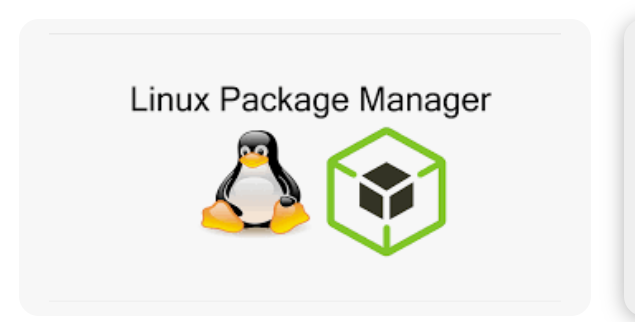Day 7 Understanding Package Manager and systemctl
 Fauzeya
Fauzeya
Introduction:
In this post, we'll explore what package managers are, how they work, and their importance in installing and managing software on Linux systems. Then, we'll walk through the steps to install Docker and Jenkins using package managers on Ubuntu and CentOS.
What is a Package Manager in Linux?
A package manager is a tool that simplifies the process of installing, removing, and managing software on an operating system. Whether you're working on Ubuntu or CentOS, package managers save you time by handling dependencies and software installation automatically.
What is a Package?
Packages are files that contain the necessary components to run the software, including executable files and configuration data. They could be GUI applications, command-line tools, or even libraries used by other programs.
Different Kinds of Package Managers
Each Linux distribution typically uses its package manager:
For Ubuntu (DEB-based systems),
apt-getis commonly used.For CentOS (RPM-based systems),
yumordnfis used.
Installing Docker and Jenkins on Ubuntu and CentOS Using Package Managers
Introduction
In modern DevOps practices, Docker and Jenkins play essential roles. Docker enables containerization, making deploying and managing applications in isolated environments easier, while Jenkins automates the software development lifecycle, providing Continuous Integration and Continuous Deployment (CI/CD).
This guide will walk you through installing Docker and Jenkins on both Ubuntu and CentOS operating systems using their respective package managers.
Installing Docker on Ubuntu
To install Docker on Ubuntu, follow these steps:
Update the package list and install required packages:
sudo apt update sudo apt install apt-transport-https ca-certificates curl software-properties-commonAdd Docker’s official GPG key:
curl -fsSL https://download.docker.com/linux/ubuntu/gpg | sudo apt-key add -Add the Docker APT repository:
sudo add-apt-repository "deb [arch=amd64] https://download.docker.com/linux/ubuntu $(lsb_release -cs) stable"Update the package list again:
sudo apt updateInstall Docker:
sudo apt install docker-ceCheck Docker installation:
sudo systemctl status docker
Installing Docker on CentOS
For CentOS, Docker installation involves similar steps:
Update the package manager:
sudo yum updateInstall required dependencies:
sudo yum install yum-utils device-mapper-persistent-data lvm2Add the Docker repository:
sudo yum-config-manager --add-repo https://download.docker.com/linux/centos/docker-ce.repoInstall Docker:
sudo yum install docker-ceStart Docker and enable it to run at startup:
sudo systemctl start docker sudo systemctl enable dockerCheck Docker status:
sudo systemctl status docker
Installing Jenkins on Ubuntu
Follow these steps to install Jenkins on Ubuntu:
Add the Jenkins repository key:
curl -fsSL https://pkg.jenkins.io/debian/jenkins.io.key | sudo apt-key add -Add the Jenkins repository:
sudo sh -c 'echo deb http://pkg.jenkins.io/debian-stable binary/ > /etc/apt/sources.list.d/jenkins.list'Update the package list:
sudo apt updateInstall Jenkins:
sudo apt install jenkinsStart Jenkins:
sudo systemctl start jenkinsEnsure JAVA is installed (Jenkins requires Java):
java -versionIf Java is not installed:
sudo apt install default-jre
Installing Jenkins on CentOS
To install Jenkins on CentOS, follow these steps:
Install Java:
sudo yum install java-11-openjdkAdd the Jenkins repository:
sudo wget -O /etc/yum.repos.d/jenkins.repo https://pkg.jenkins.io/redhat-stable/jenkins.repo sudo rpm --import https://pkg.jenkins.io/redhat-stable/jenkins.io.keyInstall Jenkins:
sudo yum install jenkinsStart Jenkins:
sudo systemctl start jenkins sudo systemctl enable jenkins
systemctl and Systemd
Systemctl is a command-line utility that allows you to interact with the systemd system and service manager. Systemd is responsible for managing system processes and services on Unix-like operating systems.
Examples:
Checking Docker Service Status:
sudo systemctl status dockerStopping the Jenkins Service:
sudo systemctl stop jenkins
You can also use systemctl to automate service management tasks such as starting services at boot time:
Enable Docker to start on boot:
sudo systemctl enable dockerDisable Jenkins from starting on boot:
sudo systemctl disable jenkins
Conclusion
By following this guide, you’ve learned how to install Docker and Jenkins on both Ubuntu and CentOS using package managers. Understanding how to manage services with systemctl and systemd will further enhance your ability to automate and maintain a robust DevOps pipeline.
1. Check Docker Service Status
After installing Docker, you need to verify if it's running correctly by checking its status using the following command:
sudo systemctl status docker
- Explanation: This command will display the current status of the Docker service. If it’s running, you’ll see "active (running)" in the output. Make sure to complete the Docker installation steps before running this command.
2. Manage Jenkins Service
You are tasked with stopping the Jenkins service and comparing its status before and after the change.
Check Jenkins status before stopping:
sudo systemctl status jenkinsThis shows if Jenkins is running.
Stop the Jenkins service:
sudo systemctl stop jenkinsThis stops the Jenkins service.
Check Jenkins status after stopping:
sudo systemctl status jenkinsThis should now show the service as "inactive (dead)" after stopping.
Post Before and After Screenshots: Capture the terminal before and after you stop the service to demonstrate the status change.
3. Read About Systemctl vs. Service
The systemctl command is a part of systemd, the default init system on most modern Linux distributions, while the service command is an older utility.
systemctl:
Used to manage services, check status, enable/disable services at boot, and more.
Example to check Docker status using systemctl:
sudo systemctl status docker
service:
A legacy command is used to start/stop/restart services in older Linux distributions or those using SysVinit.
Example to check Docker status using service :
sudo service docker status
Key Differences:
systemctl is more powerful and versatile, providing extended control over system processes and boot sequence management.
service is still available for backward compatibility, but most modern distributions have moved towards systemctl as it is more feature-rich.
You can use both commands to manage services, but systemctl is the recommended option on newer systems.
Automate Service Management
You can create a Bash script to automate the starting and stopping of the Docker and Jenkins services. Here’s a simple script you can use:
Service Management Script: manage_services.sh
#!/bin/bash
# Function to start services
start_services() {
echo "Starting Docker and Jenkins services..."
sudo systemctl start docker
sudo systemctl start jenkins
echo "Services started."
}
# Function to stop services
stop_services() {
echo "Stopping Docker and Jenkins services..."
sudo systemctl stop docker
sudo systemctl stop jenkins
echo "Services stopped."
}
# Main Menu
echo "Service Management Script"
echo "1. Start Services"
echo "2. Stop Services"
echo "3. Exit"
read -p "Choose an option (1-3): " option
case $option in
1)
start_services
;;
2)
stop_services
;;
3)
echo "Exiting..."
;;
*)
echo "Invalid option. Please choose 1, 2, or 3."
;;
esac
How to Use the Script:
Create a new file:
vim manage_services.shCopy and paste the above script into the file.
Save and exit (in nano, press
esc:wq, thenEnter.Make the script executable:
chmod +x manage_services.shRun the script:
./manage_services.sh
2. Enable and Disable Services
You can use systemctl to enable Docker to start on boot and disable Jenkins from starting on boot with the following commands:
Enable Docker to start on boot:
sudo systemctl enable dockerDisable Jenkins from starting on boot:
sudo systemctl disable jenkins
You can verify these settings by checking the status:
sudo systemctl is-enabled docker
sudo systemctl is-enabled jenkins
3. Analyze Logs
You can use journalctl to analyze the logs of the Docker and Jenkins services.
Check Docker logs:
journalctl -u docker.service --since "1 hour ago"This command will show the logs of the Docker service for the last hour. You can adjust the time frame by changing the
--sinceparameter.Check Jenkins logs:
journalctl -u jenkins.service --since "1 hour ago"Sample Output from
journalctl(Docker):Oct 11 15:23:12 ubuntu dockerd[1234]: Docker daemon started Oct 11 15:23:15 ubuntu dockerd[1234]: Container started: nginxSample Output from
journalctl(Jenkins):Oct 11 16:40:33 ubuntu jenkins[4321]: Jenkins started successfully Oct 11 16:41:00 ubuntu jenkins[4321]: Admin user logged inKey Insights from Logs:
Docker Logs: You can see when the Docker daemon started, any container activity, and potential errors if Docker services fail to start or stop.
Jenkins Logs: Jenkins logs provide useful information such as the time Jenkins was started, users logging in, and any errors during startup.
You can further filter logs by date and time, or check for specific errors using:
sudo journalctl -u docker --since "2024-10-11 12:00:00"
sudo journalctl -u jenkins -p err
Conclusion
With installing Docker and Jenkins, managing services, automating start/stop processes, enabling and disabling services on boot, and analyzing logs completed, you've tackled all challenges with efficiency and precision.
These foundational service management and automation skills are crucial for maintaining robust systems.
Subscribe to my newsletter
Read articles from Fauzeya directly inside your inbox. Subscribe to the newsletter, and don't miss out.
Written by

Fauzeya
Fauzeya
Hi there! I'm Fauzeya 👩💻, a passionate DevOps Engineer with a background in Computer Science Engineering🎓. I’m committed to enhancing security🔒, efficiency⚙️, and effectiveness in software development and deployment processes. With extensive knowledge in cloud computing☁️, containerization📦, and automation🤖, I aim to stay updated with the latest tools and methodologies in the DevOps field. Currently, I’m on a journey to deepen my understanding of DevOps I enjoy sharing my learning experiences and insights through my blog, 📝where I cover topics related to DevOps practices, tutorials, and challenges. I believe in continuous growth and learning and am excited to connect with fellow tech enthusiasts and professionals🤝. Let’s embark on this journey together!🚀